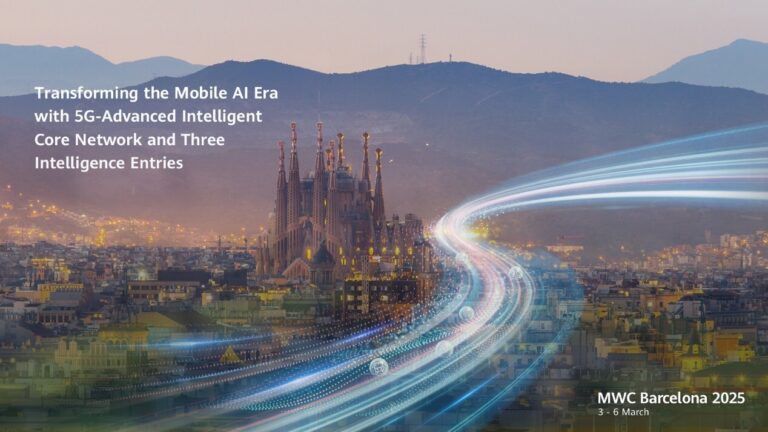The integration of 5G-Advanced (5G-A) and artificial intelligence is ushering in a new era for mobile communications, with operators leveraging intelligent networks to enhance services, efficiency, and revenue opportunities.
In 2024, the first commercial deployment of 5G-A took place in China, the Middle East, and the Asia-Pacific region. Now, as 2025 approaches, telecom providers are looking to capitalise on the next phase of this technology, using AI-driven intelligence to reshape their operations and services.
Huawei has outlined three key areas of intelligence that will define the next stage of 5G-A’s rollout: service intelligence, network intelligence, and intelligent operations and maintenance (O&M). Together, these innovations are expected to drive telecom operators towards a smarter, more efficient, and profitable future.
Intelligent Services and Enhanced Communication
One of the most notable advancements in service intelligence is New Calling, a feature that incorporates an intelligent calling agent to offer ultra-HD, interactive, and AI-powered audio and video calls. The technology optimises network bandwidth and computing resources to provide seamless connectivity while reducing costs for businesses.
China Mobile has already rolled out New Calling across its entire network, benefiting more than 40 million users. The operator says this development is redefining the calling experience, introducing capabilities far beyond traditional voice and video services.
Another innovation is the AI Home Hub, a platform that integrates AI and computing power to deliver advanced home services. First launched in Beijing and Jilin in 2024, the service is expected to expand across more than 20 Chinese provinces by 2025, bringing AI-driven solutions into thousands of households.
Network Intelligence: Real-Time User Insights
The rise of network intelligence is also reshaping the telecom landscape. By incorporating Network Data Analytics Function (NWDAF)-based intelligence, operators can now track real-time user experiences and dynamically adjust network resources. This ensures optimised performance for services such as live streaming, cloud gaming, and online conferencing.
Several provinces in China have already adopted solutions like the Intelligent Personalised Experience (IPE) solution and the MyLogo service, which provides a personalised service entry point at the top of users’ screens. These innovations enable experience-driven monetisation and enhance user engagement. A nationwide expansion is set for 2025.
AI-Driven O&M to Improve Efficiency
Operational efficiency is also set to improve with intelligent O&M, which leverages AI to streamline processes. Huawei has introduced the MDAF component, a unified O&M portal designed to enhance alarm and complaint handling systems. A Chinese telecom operator that integrated MDAF into its operations in 2024 reportedly saved over CNY10 million, marking a significant step towards autonomous network management.
Huawei to Showcase 5G-A at MWC 2025
The Mobile World Congress (MWC) 2025, taking place in Barcelona from 3–6 March, will serve as a platform for Huawei to present its latest 5G-A intelligent core network solutions. Industry leaders and stakeholders will gather to explore how AI-driven telecom innovations can accelerate network commercialisation and redefine the future of mobile connectivity.
As telecom operators worldwide embrace AI-powered 5G-A technologies, 2025 is expected to be a turning point for the industry, shaping a more intelligent and interconnected digital world.

